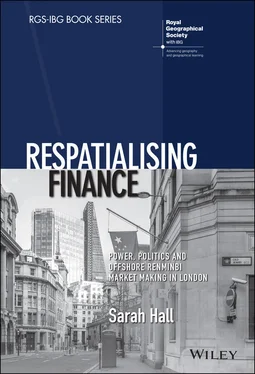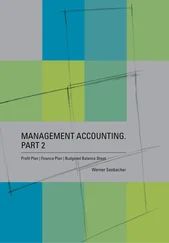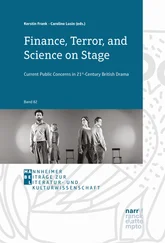Sarah Hall - Respatialising Finance
Здесь есть возможность читать онлайн «Sarah Hall - Respatialising Finance» — ознакомительный отрывок электронной книги совершенно бесплатно, а после прочтения отрывка купить полную версию. В некоторых случаях можно слушать аудио, скачать через торрент в формате fb2 и присутствует краткое содержание. Жанр: unrecognised, на английском языке. Описание произведения, (предисловие) а так же отзывы посетителей доступны на портале библиотеки ЛибКат.
- Название:Respatialising Finance
- Автор:
- Жанр:
- Год:неизвестен
- ISBN:нет данных
- Рейтинг книги:5 / 5. Голосов: 1
-
Избранное:Добавить в избранное
- Отзывы:
-
Ваша оценка:
- 100
- 1
- 2
- 3
- 4
- 5
Respatialising Finance: краткое содержание, описание и аннотация
Предлагаем к чтению аннотацию, описание, краткое содержание или предисловие (зависит от того, что написал сам автор книги «Respatialising Finance»). Если вы не нашли необходимую информацию о книге — напишите в комментариях, мы постараемся отыскать её.
Respatialising Finance
Respatialising Finance
Respatialising Finance — читать онлайн ознакомительный отрывок
Ниже представлен текст книги, разбитый по страницам. Система сохранения места последней прочитанной страницы, позволяет с удобством читать онлайн бесплатно книгу «Respatialising Finance», без необходимости каждый раз заново искать на чём Вы остановились. Поставьте закладку, и сможете в любой момент перейти на страницу, на которой закончили чтение.
Интервал:
Закладка:
“Prior to the global financial crisis RMB internationalization was already a gleam in the eye of elites in China, but it was understood that the yuan was a long way off from serving as an important international currency. The dominant position of the dollar, the emergence of the euro, and the fragility of China’s sheltered, murky domestic financial sector (in contrast with the venerable institutions and market powerhouses to be found in the West) tempered expectations about how quickly the RMB might take its place as a currency widely used in international transactions, let alone held as a reserve asset. Nevertheless, such ambitions, however distant, were clearly harboured, and as China continued its rise to great power status it was natural to assume that a greater international role for a maturing RMB would be part of that process”
Although the future of RMB internationalisation is uncertain and has slowed since 2015, there are a number of indicators which point to marked changes in the position of the currency internationally, and by extension the role of China within the international financial system (Chey and Vic Li 2020). For example, China now holds the largest foreign currency reserves of any country. These are used to support the pegging of the renminbi (RMB) to the US dollar. These stockpiles are also used to support China’s international trade policy. Increases in Chinese holdings of US dollars raises the value of the US dollar compared with the RMB, meaning that Chinese exports become cheaper than their US counterparts. Moreover, its exchange rate policy is closely monitored internationally, often shaping the exchange rate policy of other countries (Helleiner and Kirshner 2014). Meanwhile, significant infrastructure spending arising from the Belt and Road initiative (BRI) that spans central Asia, Central Africa and Eastern Europe involves financing from state-owned banks, sovereign wealth funds such as the China Investment Corporation as well as multilateral investment funds such as the Silk Road Fund. In so doing, the BRI therefore raises important questions about how these rapidly evolving financial institutions sit alongside and potentially reshape international financial relations (on which see Lim 2010, for example).
Respatialising Finance argues that the financial centre provides a valuable but hitherto comparatively neglected entry point into understanding RMB internationalisation. Indeed, in many ways, the lack of sustained engagement with financial centres in relation to RMB internationalisation is surprising because it has developed through a distinctive spatial footprint comprising a network of offshore (beyond mainland China) financial centres. Echoing Hong Kong’s position as an experimental site for the reform and internationalisation of the Chinese economy more generally (Chen and Cheung 2011), Hong Kong became the first such centre in mid-2010 (Walter and Howie 2011). Since then, a small number of other financial centres, including Singapore, Taiwan and London, have developed significant RMB financial markets (Hall 2017). These offshore RMB centres can be defined as a financial centre ‘outside [mainland] China that conducts a wide variety of financial services denominated in RMB’ (ASIFMA 2014: 20) that connects with onshore financial services in mainland China (Subacchi and Huang 2012). These centres host a designated RMB clearing bank, hold sizable, although varying, amounts of RMB deposits and have seen the development of a range of RMB markets. They are supported by a number of offshore financial RMB hubs (such as Paris, Luxembourg and Frankfurt) that access mainland China partly through the offshore RMB centres. Hong Kong remains the largest offshore RMB centre and has been the most widely studied to date (see Fung and Yau 2012).
However, less attention has been paid to how and why financial centres beyond mainland China become enrolled within RMB internationalisation. Respatialising Finance responds to this by examining how and why London became the leading Western financial centre within the wider Chinese economic and political project of RMB internationalisation. My analysis is based on a research project dating back to 2015 that focused on the growth of wholesale Chinese finance in London’s financial district. Echoing my earlier work on financial labour markets (Hall 2009), my initial interest lay in examining the growth of elite Chinese migration into London’s financial district. However, I rapidly realised that, as with earlier rounds of financial labour market transformation in London, the growth of Chinese financiers and related professionals in London signalled a more profound and structural set of changes in terms of the place of Chinese finance in London’s financial district. This was reflected in the popular discourse of the time. For example, in October 2015, the Financial Times ran the headline ‘Chinese financial institutions grow closer to the heart of London’ (Stafford 2015). The article documented London’s rise as the first and leading western offshore centre (beyond mainland China) for financial products and markets denominated in the Chinese currency – the renminbi. The article was accompanied by a picture of the Chinese flag flying in the centre of London’s historic financial district, close to the Bank of England, with the financial offices of Canary Wharf in the background. This suggested to me that marked changes were taking place in relation to the place of Chinese finance globally, and in London in particular.
As such, it quickly became apparent that my research would need to explore a range of different actors, including not only the individuals working in Chinese finance but also institutions, including banks, financial firms and regulators. By combining analysis of official data sources on RMB internationalisation in conjunction with in-depth research with people working in financial markets in London and Beijing, the arguments presented in this book identify the key actors involved in initiating and shaping RMB internationalisation. In particular, these findings reveal how state actors and regulators in both Beijing and London were critical in facilitating and promoting the development of RMB markets in London. For Beijing in particular, in many ways this finding is not surprising given the carefully planned nature of economic development in China that has increasingly been applied to its international economic development aspirations (Lim 2018). However, my analysis shows that intervention from the UK government, particularly through the then Prime Minister David Cameron and Chancellor George Osborne, was also important.
This analysis demonstrates the need for economic geographical research, and work in cognate social sciences, to place questions of the state, politics and power more centrally within work on the geographies of money and finance. Responding to this challenge forms the conceptual contribution of the book. Here, I argue that the meso scale of the international financial centre, bringing together the predominately macro-economic concerns of international political economy research on monetary transformation with the micro scale analysis of cultural economy approaches to financial market making, provides a valuable way of doing this. Before setting out the content of the subsequent chapters, I expand on this conceptual contribution made in Respatialising Finance .
Chinese Finance and the Geographies of Money
Narratives of monetary change and transformation, as well as work on international financial centres such as London, are by no means new within geographical research on money and finance. Respatialising Finance takes this literature as its starting point. Indeed, in many ways, processes of change and transformation have always characterised the development of the international financial system. For example, the collapse of the gold standard in the early 1970s and the associated move to floating exchange rates was a transformative moment in global finance and, as such, acted as a key development around which heterodox social scientists mobilised to create several of the key texts and seminal understandings of the contemporary international financial system (Corbridge et al. 1994; Leyshon and Thrift 1997; Strange 1986). One of the most significant insights to be developed within this work was an approach to the international financial system that emphasised its networked properties from a distinctly geographical perspective. In this work, the international financial system is understood as a series of networks of people, money, expertise, policy and regulation that are choreographed through a small number of international financial centres (Cassis and Wójcik 2018; Sassen 2001). This work is reflected in work in a range of social scientific disciplines adopting networks as a metaphor, theoretical approach and methodology to the study of money and finance including in geography (Pollard and Samers 2007), political economy (Fichtner et al. 2017) and cultural economy approaches to money and finance (MacKenzie 2004).
Читать дальшеИнтервал:
Закладка:
Похожие книги на «Respatialising Finance»
Представляем Вашему вниманию похожие книги на «Respatialising Finance» списком для выбора. Мы отобрали схожую по названию и смыслу литературу в надежде предоставить читателям больше вариантов отыскать новые, интересные, ещё непрочитанные произведения.
Обсуждение, отзывы о книге «Respatialising Finance» и просто собственные мнения читателей. Оставьте ваши комментарии, напишите, что Вы думаете о произведении, его смысле или главных героях. Укажите что конкретно понравилось, а что нет, и почему Вы так считаете.












